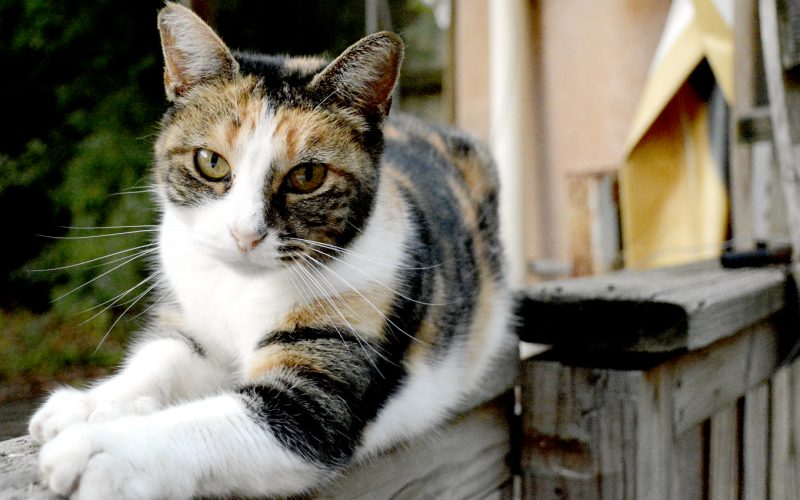
Staff Photo Amanda Bancroft
If you have pet cats, the Humane Society recommends keeping them indoors.
Against all odds and at great suffering to herself, Mila, an outdoor cat, gave birth to three healthy kittens after being shot by a BB gun through her throat. We found her in time to get her medical attention and save all four felines. In addition to cruelty, the American Humane Association has listed numerous threats to outdoor cats, including: feline leukemia, AIDS, feline infectious peritonitis, distemper, upper respiratory infections, parasites and pathogens like Toxoplasma gondii (a pathogen found only in outdoor cats), injury or death from other cats, loose dogs, cars, wildlife, and poisons. Cats are the domestic animal most frequently reported to be rabid to the CDC.
Outdoor cats live to be around seven years old, while indoor cats can live to be 14 years and older. If you know of an older outdoor cat, remember: these numbers are based on overall outdoor cat populations which were thoroughly studied. Our individual observations of individual cats doesn’t account for the unlucky majority of outdoor kitties that died young.
Domestic cats are natural predators, but that doesn’t mean they’re local, native predators. Cat predation on songbirds, cottontail rabbits and other species is not sustainable for ecosystems. The American Bird Conservancy found that domestic cats annually kill more than a billion small mammals, and hundreds of millions of birds. Studies show that cats with bells are still able to kill wildlife, because birds don’t associate the sound of bells with danger, nestlings cannot flee, and cats can learn silent stalking even with a bell. Research has also demonstrated that well-fed cats kill wildlife anyway: they will stop in the middle of eating to kill a prey animal and then resume eating cat food. Cats have contributed to the extinction of 33 species worldwide, and are observed killing endangered species. “In the U.S., free-roaming domestic cats kill an estimated 1.4 billion to 3.7 billion birds, equivalent to the entire human population of China,” claims the ABC.
If you have pet cats, the Humane Society recommends keeping them indoors and offers these tips: start young, create a fenced outdoor playground, play with cats daily, install a sunny indoor window perch and cat “tree,” plant cat grass indoors, clean the litter box regularly, consider harnessing your cat for walks, and get your cat a collar with ID or microchip in case of house fire or other emergency. Behavioral problems can usually be solved by a slower transition to indoor life (take a year if you want), and increasing amounts of attention and stimulation inside.
There are at least 65 do-it-yourself or manufactured outdoor play enclosures for cats. The SafeCat Outdoor Enclosures at Just4Cats.com include detailed drawings of the designs created by a cat lover who “lost cats to automobiles, snakes, poison and other unknown reasons.” And cats on leashes are becoming a thing: if you’ve been to Fayetteville First Thursdays, you’ll know what I mean. With training and a proper harness, cats can enjoy leash walks in a cat-like manner (enjoyable for them, but different from walking dogs). “Kittens are naturally more accepting of this new experience, but older cats can be trained with patience,” says the ASPCA’s “Teaching Your Cat to Walk on a Leash.” The article provides over a dozen tips for successfully enhancing your cat’s life with leash walks.
Cat owners worry that indoor cats suffer a lower quality of life if confined, but clearly, the undue suffering experienced by outdoor cats far outweighs preventable boredom indoors. Allowing cats to roam benefits the cat owners, but keeping cats inside benefits the cats themselves, and improves the sustainability of local ecosystems.
Amanda Bancroft is a Master Naturalist and volunteers with her husband Ryan for their solar-powered online educational center on how to make a difference with everyday choices at: www.RipplesBlog.org.










